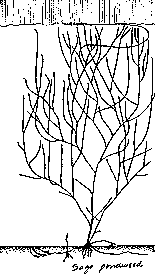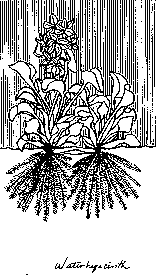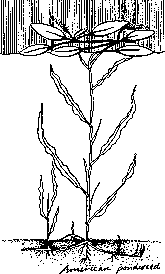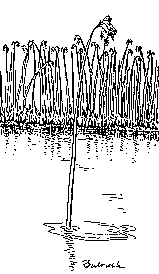Water Plants |
|
Water plants are commonly divided into four main groups:
Water plants are critical components of aquatic ecossytems. Green water plants and algae provide nutrients to aquatic systems and vital habitat structures for aquatic organisms.
Water Plants

Water plants are commonly divided into four main groups:
 |
 |
 |
 |
River and riparian ecosystems support a tremendous diversity of plant life. A vast range of microhabitats exists between the deep water habitat in the center of the river and the upland edge where the moist riparian comes to an end. Infinite variations in water depth, water flow rate, temperature, soil, and light conditions produce a complex mosaic of plant life, with an equally complex range of animal and fish habitats.General Features of Aquatic Plants
Aquatic plants are distinguished from terrestrial plants by characteristics which enable them to survive in a water environment. Theplants which show the greatest modifications live in deeper water, either wholly submerged or floating.
Water gives plants support, so they have n need of firm, strengthening tissue. Water plants tend to have flimsy, delicate stems, branches, and leaves which are pliable and resistant to breaking in turbulent water..
The buoyancy which keeps plants upright or floating in the water is often achieved by the presence of large air spaces within the plant tissue. These air spaces occur within stems, leaves and roots, and frequently link up to form a continuous passage for the circulation of oxygen to all parts of the plant. Oxygen is required for plant respiration, and is often in short supply in water, or even absent in bed strata. Aquatic plants survive by storing and circulating it within their tissues.
Terrestrial plants acquire carbon dioxide and oxygen through leaf pores which allow air into the interior of the plant. Aquatic plants have little or no access to air. They acquire the raw materials for photosynthesis and respiration from dissolved gasses in the water, through a thin outer skin.
Truly aquatic plants have poorly developed root systems, or no root systems at all. Water containing absorbed nutrients is absorbed allover the plant surface, so there is no need for a root system to absorb water, or a highly developed internal transport system to distribute water throughout the plant.
Ecological Functions of Aquatic Plants
Plants are as important to aquatic systems as they are to terrestrial systems. They are able to manufacture organic material from inorganic substances through photosynthesis. Aquatic species feed on them, either directly or indirectly through food chains.
Dead and decaying plant material is also an important food source for small scavenging animals, which in turn are eaten by larger animals, and so on up the food chain.
Plants provide mechanical support for aquatic animals, as well as protection from predators and shade. Many aquatic creatures lay their eggs on or in various parts of aquatic plants.